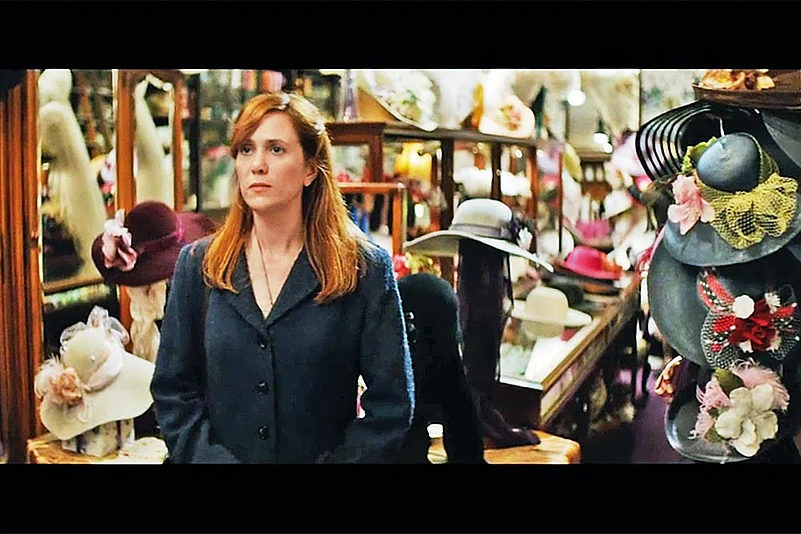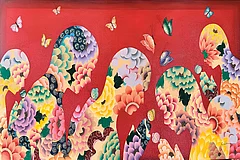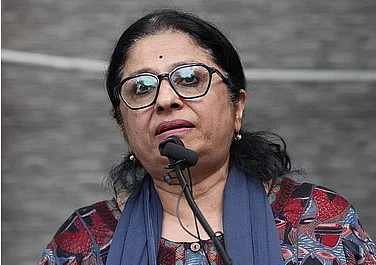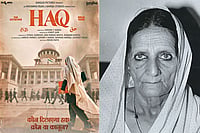In the short story Hateship, Friendship, Courtship, Loveship, Marriage—in the collection of short stories by the same name—by Alice Munro, two young girls, Edith and Sabitha, the first callous and the second conflicted, play a mean prank that changes many lives. To kill boredom, they write hoax love letters to the lonely and plain spinster Johanna, forging the signature of Sabitha’s father, Ken Boudreau, a drifter who lives in another town. It’s a delicate story of the casual cruelty of the young, sparse and hard life of the poor in the outback of Ontario, the small and simple hopes of Johanna, longing for identity and meaning. It ends on a note of optimism, Ken and Johanna are going to be married, but it may be that Johanna is only going from one life of hardship to another, maybe this time with a little bit of love.
This story stayed with me for many days. I would see Johanna in many people I knew, and in many other characters in books and films, like say in Iris played by the other-worldly Kati Outinen in Finnish filmmaker Aki Kaurismäki’s devastating film The Match Factory Girl. I love the short story. I love its distilled thought and compact form; the writer bringing to life characters and locations with just a few flourishes. I have devoured everything from the warm and humane stories of Anton Chekhov, O Henry and Guy de Maupassant, the stinging stories of Ambai (C S Lakshmi), the twisted tales of Italian writer Dino Buzzati (in the collection Catastrophe). Stories that can take place in one afternoon like Saki’s inventive The Open Window or Roald Dahl’s Lamb to the Slaughter, or many lifetimes, like so many by Annie Proulx.
And among all short story writers, for me, Munro was right up there. I feel a kinship to the vast, desolate, grey expanses she describes and I feel I know those areas of Canada so well even though I have never been there. When she was awarded the Nobel Prize, I was overjoyed; it was as if someone I knew had got it. I had a lump in my throat when I heard of her death and re-read Dance of the Happy Shades as homage.
Unlike the relationship we have with doctors or CAs, with artists, writers, filmmakers, musicians and poets, we connect with our hearts and minds.
So the disclosure by her daughter Andrea Skinner that her stepfather abused her and that Munro knew of it and didn’t do anything is, at the same time, shattering and confounding. My first impulse was to be angry at the daughter for coming out now. But that subsided and my heart went out to a nine-year-old girl of a famous writer quietly suffering the abuse. Then my questions went to Munro. I kept asking her how she could do it, how could she continue to live with the man who was raping her daughter? We get to know of incidents like these long after they have happened. But what must have gone through her mind while it was happening? And write such delicate and sensitive stories at the same time?
Well, apparently it can happen with creative people. I know writers and artists, poets and musicians are supposed to be made of many people (as much as any of us), contain multitude of personalities, are flawed and frail. In many cases, the creative juices are unleashed because they are dysfunctional. We do give them a lot of leeway. ‘Enfant terrible’ is a badge of creativity in their world. We allow them many transgressions, many infidelities and misdemeanours, dress outrageously at red carpets or not wear anything at all, be irascible and insulting in public to lesser mortals, have anger management issues, be mean and petty (as apparently Nobel winner and bohemian writer Doris Lessing was, as alleged by her adopted daughter and author Jenny Diski, or poet Philip Larkin was, as alleged by everyone he met), be philanderers and femme fatales, do drugs and crash fast cars, and in some cases, cut their own ears. What kind of rockstar are you if you haven’t been to a rahab! So many times we ourselves have put drunks into cabs after parties, saying, ‘Yeh toh kavi aadmi hai’ (he is a poet).
And I understand the chagrin many have on the new wokeism and cancel culture. It is indeed ridiculous to change every mention of ‘nigger’ in books written in the 1920s and 1930s to African American or any mention of ‘blind’ to ‘visually challenged’. It is silly to re-write and sanitise Roald Dahl’s book to be politically correct. Not all work of art can be cancelled with the same sledgehammer. But when the crime is paedophilia, rape, domestic violence, sexual harassment, child abuse or murder, a line has to be drawn, however brilliant and talented the artist is and however path-breaking their body of work may be. It has to be the degree and intensity of the crime, not in the eyes of law but in that of humanity.
Unlike the relationship we have with doctors or CAs, with artists, writers, filmmakers, musicians and poets, we connect with our hearts and minds. We like one author and dislike another as we mould them in our minds as ourselves. Every story of Munro I feel I could have written. The difference is she had the talent and I didn’t. That’s why the betrayal is so hard to take.
We had gone to attend perhaps the last concert of the Gundecha Brothers in Delhi before Covid stuck. I remember they were particularly mesmerising that evening in wintry Delhi, the Dhrupad transposing us to rarefied realms of the mind. Soon, there were accusations of molestation, first by one of their girl students and then by a dozen more. I was angry and saddened. It was not some righteous indignation; it was not as if some wokeism woke up in me. It was plain and simple seething with rage. I have never heard their music after that, and I will inform any young newcomer to their music about the “Me Too” allegations. Rejecting their music will leave a big gap in my classical music listening, but I will have to live with it.
MORE FROM THIS ISSUE
I used to have a book of four scripts of Woody Allen: Annie Hall, Manhattan, Interiors, and Stardust Memories. I used to know the dialogues by heart and I would re-watch Annie Hall and Manhattan on DVD with the scripts in my hands, laughing out loud. Allegations of sexual abuse by his partner and actor Mia Farrow of their seven-year-old adopted daughter may or may not be true, but I have not visited his films or gone back to the scripts in a long time. I have read and heard very persuasive arguments against cancel culture, how the artist and their art should be separated, that creative minds don’t function like ordinary people. Mostly, I agree with them. But I will draw the line when the crime is as heinous as paedophilia and rape.
(This appeared in the print as 'Iron In The Soul')



































